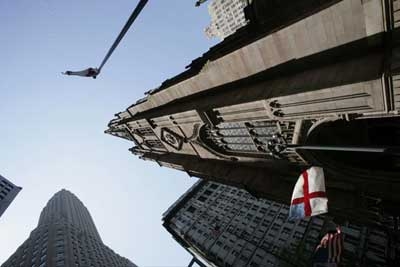Installations: A Higher Power Page 5

Producing prodigious bass in a space the size of Trinity Church means moving some serious air. In previous installations, Marshall & Ogletree used subwoofers that resembled refrigerators more than speakers. Standing 8 x 4 x 3 feet, the large cabinets housed twin 15-inch drivers powered by 100-watt amplifiers. While these speakers could reproduce an organ's 16-Hz notes, they took up so much space that installation proved challenging.
Douglas Marshall explained that he and David Ogletree prefer to use "a multiplicity of subs, both for power and for individual note separation. So, space can become a real problem. Those huge subs weren't practical to use this way in most rooms."
At a recent Marshall & Ogletree installation in Charlotte, North Carolina, "we barely would've had room for one of them in the organ chambers," said Marshall, "and you would've had to remove some of the pipe organ to get it in." With the Trinity installation, the organ designers turned to Definitive Technology for a solution.
Def Tech's Sandy Gross elaborated: "Marshall & Ogletree wanted a relatively small powered sub that could produce large amounts of energy below 16 Hz. Reliability was also important. The church was just totally overdriving our SuperCube Reference subs - which was understandable, since the Reference had been designed for use in homes, and producing that same sound-pressure level in a large public space is entirely different. You're dealing with possibly 100 times or more the air volume.
"Creating the Trinity sub was really an engineering exercise for us," Gross continued. "We came up with a concept that would appear to be a double version of the SuperCube Reference. Basically it is, in terms of driver complements, but when you increase the size of the box and put those drivers into it, you have a whole new entity in how you can tune it.
"We also developed a new tuning algorithm to optimize this sub, and it really helped produce the results we're getting out of it. Another design challenge was how to get accurate measurements below 20 Hz in an anechoic chamber, so we developed a new, proprietary process for chamber calibration. We also had to make sure the sub would stay together, so we developed a new protection circuit, a high-temperature high-strength adhesive, and a new voice coil, different from those used in the SuperCube Reference subs. We also designed it to perform equally well standing up or sitting down."
The result is the SuperCube Trinity Signature, which is 313/4 inches high, 18 inches wide, and 18 inches deep, tipping the scales at 175 pounds. The sub includes two 14-inch long-throw drivers coupled to four 14-inch infrasonic radiators. Powered by a 2,000-watt digital amplifier, it can produce in excess of 128 dB at 20 Hz and 116 dB at 16 Hz in a normal-sized room. In essence, the Trinity sub delivers bass powerful enough to move the mind, body, and soul.
To experience Trinity's Opus 1 organ, stop by the church. If you can't make it to New York City, go to marshallogletree.com and click on the Experience tab. There you can listen to and watch several performances. (To hear Cameron Carpenter and Douglas Marshall play the Opus 1 in surround, order the Pictures at an Exhibition and Opus 1 DualDisc recordings through the Marshall & Ogletree site.) Also, all services and many concerts at Trinity Church are Webcast at trinitywallstreet.org. Be warned: Your computer speakers are going to get a workout!
More Installation Stories Back to Homepage What's New on S&V








































